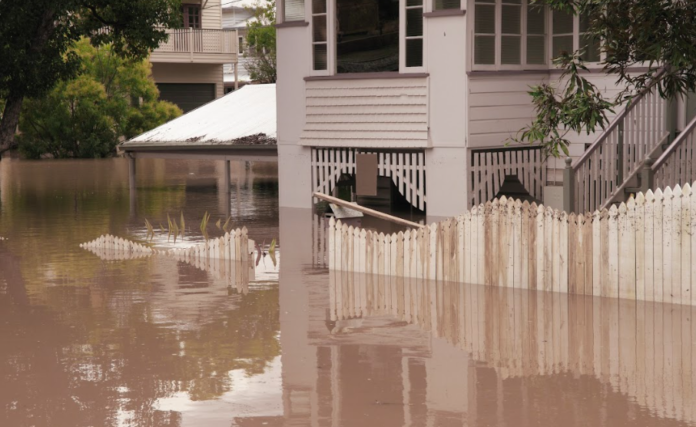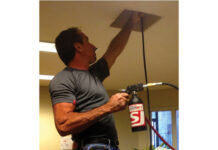Returning home after a flooding event can be challenging for your family. Fortunately, there are effective ways to repair water damage and recover some of your belongings if you act swiftly.
Once you’ve called your insurer for disaster assistance and local authorities have cleared your area as safe to move back into, you can begin the restoration process with the help of specialists and a few tools to get the job done.
The most important priority of saving your home is reducing moisture content and eliminating hazards for your long-term well-being. Here’s how to restore your home after a flood.
- Protect Your Health And Safety
After a flooding event, your home poses several dangers to your health and safety. Floodwaters may have brought in sewage, river, and drain water that contains toxic substances such as bacteria into your home. On top of this are damaged electrical wires and appliances that could risk electrocution.
Before you begin any restoration work, you must ensure your safety. Wear protective gear that covers any exposed areas of your body, such as arm-length rubber gloves and trousers tucked into rain boots. Additionally, you can include an N95 respirator or tightly fitted goggles to prevent inhaling pollutants and mold spores. Finally, switch off your electrical grid when it’s safe to enter your home.
- Remove Debris
All the wet household items in your home must be removed, and discard any unsalvageable items. Doing this will clear the space so you can clean and dry out your home and belongings.
This is especially important for absorbent fabrics such as furniture, bedding and mattresses, loose carpeting, rugs and mats, curtains, clothing, and towels. If there’s any remaining still water in the pockets of your home, you can visit this URL to hire experts who can safely drain it using a pump.
- Remove Damaged Walls And Flooring
Your interior walls will need to remove if they’ve been water damaged by being soaked until they crumble or break off in parts. This also includes any insulation, wall lining, and plasterboard within the wall cavity if it’s damp. If the damage is minimal, you can use a utility knife to carve out damaged sections of the wall. Otherwise, hire a contractor for more complex tasks that require removing wires, nails, and support structures.
Furthermore, all the flooring in your home will need to be removed and eventually replaced, even if it’s made of ceramic tiles, vinyl, or water-resistant laminate. Wooden floors may need to have the subfloor drained and debris removed to prevent moisture and silt from settling underneath and causing bacterial growth.
- Start The Cleaning Process
Finally, you can begin deep cleaning your house after removing all the damage and debris. Gather all your cleaning equipment first, including mops, brooms, squeegees, shovels, garbage bags, and microfiber cloths. You’ll also need an antimicrobial disinfectant, such as a cleaning detergent or homemade diluted bleach, to kill bacteria and remove toxic substances from your home.
You can begin by removing mud and silt deposits in your home using a shovel or sweeping it out. If you need water to clean out hardened dirt, use a hose to flush it out and mop it out. Then, you can disinfect all surfaces by wiping them down with your detergent solution. Make sure to go over every corner thoroughly, including small spaces and behind fixtures in the bathroom and kitchen, until they return to their normal color and condition.
- Dry Out Your Home
It’s crucial to begin drying out your home as soon as you’re done cleaning, especially if you’ve reintroduced water back into your home. Mold and mildew are a major concern for a home with a high moisture and condensation content, and it can begin growing within 24 hours after exposure to dampness.
Thus, you can dry out your home using ventilation, dehumidifiers, air conditioners, and fans if a contractor confirms it’s safe to turn your electricity back on. Keep all doors, windows, cabinets, and wardrobes open to allow for better air circulation and quicker drying. Additionally, if you encounter mold growths, let it dry before removing it while wearing a respirator. Any large areas of growth will need expert removal to prevent the spreading of dangerous spores into the air. Using a moisture meter can detect when your home is dry within safety limits.
Conclusion
Restoring your home after a flood involves wearing protective gear before entering to protect you from electrical and biohazards inside. You can safely remove household debris, flooring, and water-damaged walls outside to dry or discard.
Then you can clean your home until it’s disinfected on every surface and allowed to dry to prevent mold growth. After repair work, your home can be cleared to move back into after inspection.











